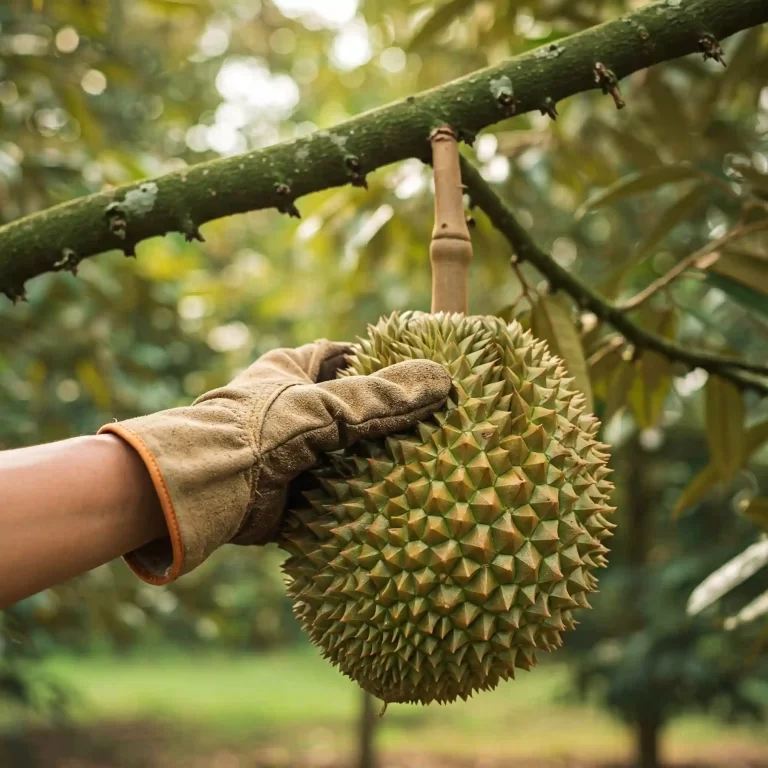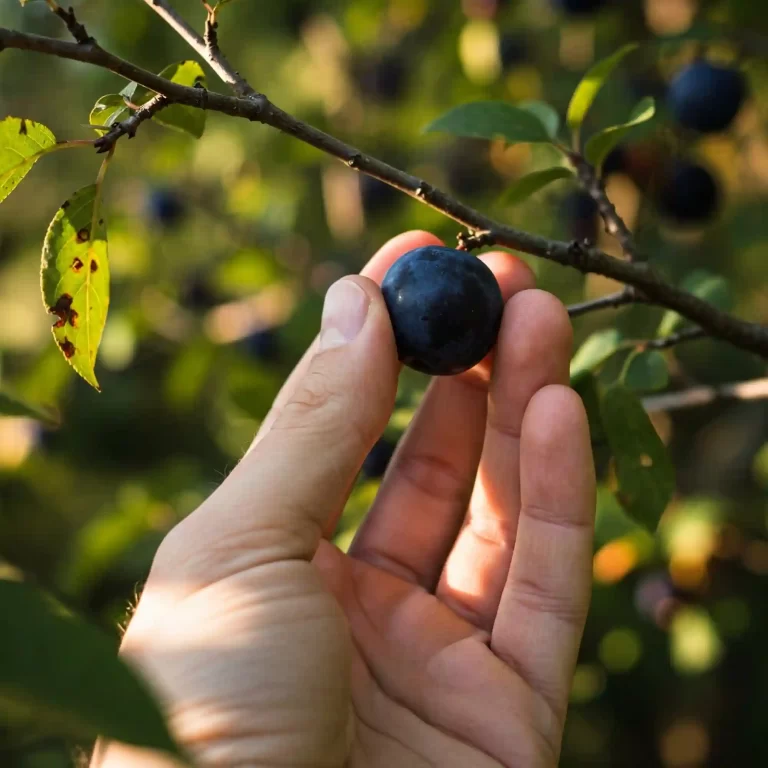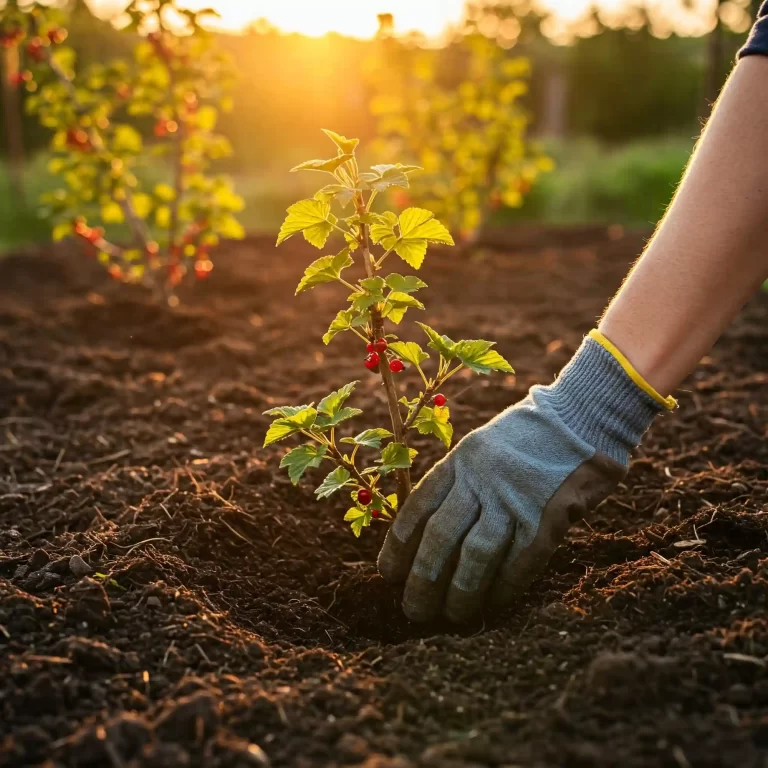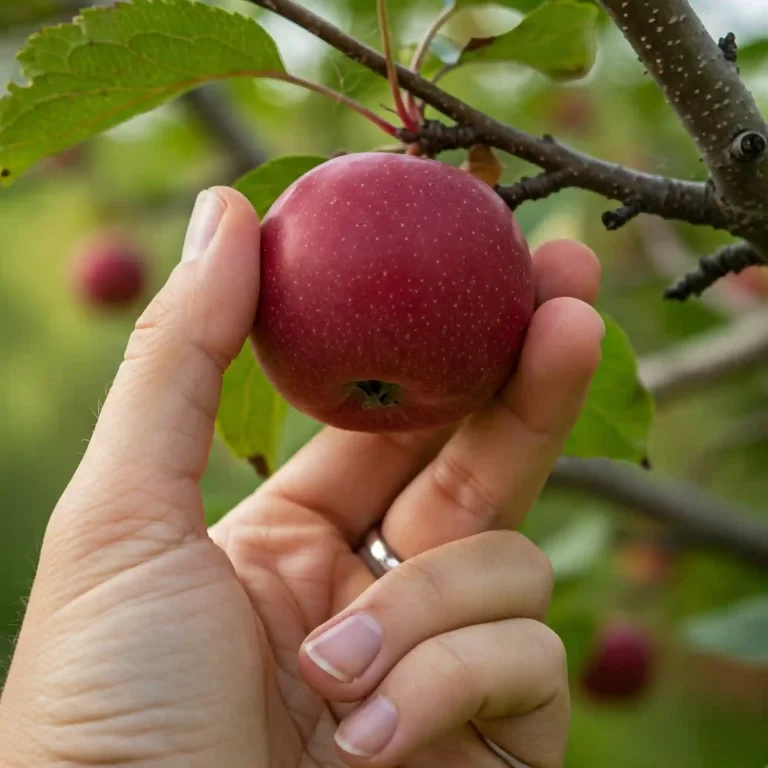Gardening can be a rewarding hobby, but it comes with its own set of challenges. One of the most common issues gardeners face is ensuring their plants receive the right nutrients. Sulfur is a crucial element that often gets overlooked, yet it plays a vital role in plant health. Without adequate sulfur, plants can suffer from stunted growth, yellowing leaves, and reduced yields. This can be frustrating for gardeners who put in a lot of effort but don’t see the desired results. The good news is that understanding how to use sulfur effectively can transform your garden. In this comprehensive guide, we’ll explore the many benefits of sulfur, how to use it, and why it’s essential for your garden’s success.
What is Sulfur?
Sulfur is a chemical element with the symbol S and atomic number 16. It is a non-metal and is abundant in nature, found in volcanic regions, meteorites, and even seawater. Sulfur is known for its distinctive yellow crystals and its pungent smell, often associated with rotten eggs due to the presence of hydrogen sulfide.
Chemical Properties of Sulfur
Sulfur has several allotropes, the most common being rhombic and monoclinic sulfur. It is insoluble in water but soluble in carbon disulfide. Sulfur has a melting point of 115.21°C and a boiling point of 444.6°C. It is a poor conductor of electricity and heat, making it unique among non-metals.
Natural Occurrence and Sources of Sulfur
Sulfur is found naturally in various forms. It can be extracted from underground deposits, often associated with salt domes. It is also a byproduct of refining fossil fuels, where sulfur compounds are removed to reduce pollution. In nature, sulfur is found in volcanic regions, hot springs, and as a component of certain minerals like pyrite and gypsum.
Historical Context and Significance in Gardening
Historically, sulfur has been used for thousands of years. Ancient civilizations used sulfur for medicinal purposes and as a fumigant to control pests. In gardening, sulfur has been recognized for its ability to improve soil health and plant growth. It is an essential nutrient that plays a critical role in various biological processes within plants.
Benefits of Sulfur for Plant Growth
Sulfur is an essential nutrient for plants, playing a crucial role in their overall health and development. Here are some of the key benefits of sulfur for plant growth:
Role of Sulfur in Plant Metabolism and Growth
Sulfur is a vital component of amino acids, which are the building blocks of proteins. It is also involved in the formation of enzymes and vitamins, such as biotin and thiamine. These compounds are essential for various metabolic processes, including photosynthesis and nitrogen fixation.
Importance of Sulfur in Amino Acids and Vitamins
Sulfur is a key element in the amino acids cysteine and methionine. These amino acids are crucial for protein synthesis and play a role in the formation of chlorophyll, which is necessary for photosynthesis. Sulfur is also a component of certain vitamins, such as biotin and thiamine, which are essential for plant growth and development.
How Sulfur Improves Plant Health and Yield
Sulfur helps improve the overall health of plants by enhancing their resistance to diseases and pests. It also aids in the production of essential oils, which can improve the flavor and aroma of certain crops. Additionally, sulfur helps in the formation of chlorophyll, which is necessary for photosynthesis and energy production in plants.
How to Use Sulfur in Gardening
Using sulfur in gardening can be highly beneficial, but it’s essential to know how to apply it correctly. Here are some tips and guidelines for using sulfur in your garden:
Different Forms of Sulfur Available for Gardening
Sulfur is available in various forms, including elemental sulfur, sulfur dust, and sulfur-based fertilizers. Each form has its own set of advantages and applications. Elemental sulfur is often used to lower soil pH, while sulfur dust is commonly used as a fungicide and pesticide.
Step-by-Step Guide on Using Sulfur in Various Gardening Practices
- Soil Amendment: To lower soil pH, apply elemental sulfur to the soil and mix it thoroughly. The amount needed will depend on the current pH and the desired pH level.
- Fungicide: Sulfur dust can be applied to plants to control fungal diseases. Dust the plants evenly, ensuring good coverage on both the upper and lower surfaces of the leaves.
- Pesticide: Sulfur can be used to control pests such as mites and thrips. Apply sulfur dust or a sulfur-based spray to the affected plants, following the manufacturer’s instructions.
Tips for Safe Handling and Application of Sulfur
- Wear Protective Gear: When handling sulfur, wear gloves, a mask, and protective eyewear to avoid skin and respiratory irritation.
- Follow Instructions: Always follow the manufacturer’s instructions for application rates and methods.
- Avoid Overuse: Excessive use of sulfur can harm plants and soil. Use it sparingly and only when necessary.
Sulfur Deficiency Symptoms in Plants
Sulfur deficiency can have a significant impact on plant health and yield. Here are some common symptoms of sulfur deficiency and how to address them:
Common Signs of Sulfur Deficiency in Plants
- Yellowing Leaves: One of the most common signs of sulfur deficiency is the yellowing of young leaves, known as chlorosis.
- Stunted Growth: Plants with sulfur deficiency often exhibit stunted growth and reduced vigor.
- Poor Flower and Fruit Development: Sulfur deficiency can lead to poor flower and fruit development, resulting in lower yields.
How to Diagnose and Confirm Sulfur Deficiency
- Soil Testing: Conduct a soil test to determine the sulfur levels in your soil. This will help you confirm whether sulfur deficiency is the cause of the symptoms.
- Plant Tissue Analysis: A plant tissue analysis can also be conducted to measure the sulfur content in the plant tissues.
Solutions and Treatments for Sulfur Deficiency
- Apply Sulfur Fertilizers: Use sulfur-based fertilizers to address sulfur deficiency. Follow the recommended application rates to avoid over-fertilization.
- Amend Soil with Elemental Sulfur: If the soil pH is high, amend the soil with elemental sulfur to lower the pH and improve sulfur availability.
- Use Organic Matter: Incorporate organic matter, such as compost or manure, into the soil to improve sulfur levels naturally.
Best Sulfur Fertilizers for Home Gardens
Choosing the right sulfur fertilizer is essential for maintaining healthy plants. Here are some of the best sulfur fertilizers for home gardens:
Overview of Different Sulfur Fertilizers Available
- Elemental Sulfur: Pure sulfur that is used to lower soil pH and improve sulfur levels.
- Ammonium Sulfate: A nitrogen and sulfur fertilizer that provides both nutrients to plants.
- Gypsum: A calcium sulfate fertilizer that improves soil structure and provides sulfur.
Pros and Cons of Each Type of Sulfur Fertilizer
- Elemental Sulfur: Effective for lowering soil pH but slow-acting.
- Ammonium Sulfate: Provides both nitrogen and sulfur but can acidify the soil.
- Gypsum: Improves soil structure and provides sulfur but does not lower soil pH.
Recommendations for the Best Sulfur Fertilizers for Home Gardens
- Elemental Sulfur: Best for lowering soil pH and addressing sulfur deficiency.
- Ammonium Sulfate: Ideal for providing both nitrogen and sulfur to plants.
- Gypsum: Suitable for improving soil structure and providing sulfur without affecting soil pH.
How to Apply Sulfur to Soil
Applying sulfur to soil can help improve soil health and plant growth. Here are some detailed instructions on how to apply sulfur to soil:
Detailed Instructions on Applying Sulfur to Soil
- Determine the Amount Needed: Conduct a soil test to determine the current pH and sulfur levels. Use this information to calculate the amount of sulfur needed.
- Prepare the Soil: Remove any debris and weeds from the soil. Loosen the soil with a garden fork or tiller.
- Apply Sulfur: Spread the sulfur evenly over the soil surface. Use a rake to incorporate the sulfur into the top few inches of soil.
- Water the Soil: Water the soil thoroughly to help the sulfur dissolve and start working.
Best Practices for Incorporating Sulfur into Garden Soil
- Apply in the Fall: Applying sulfur in the fall allows it to break down over the winter and be ready for planting in the spring.
- Avoid Over-Application: Use the recommended amount of sulfur to avoid over-application, which can harm plants and soil.
- Monitor Soil pH: Regularly monitor soil pH to ensure it remains within the optimal range for your plants.
Tips for Achieving Optimal Results with Sulfur Application
- Combine with Organic Matter: Incorporate organic matter, such as compost or manure, into the soil along with sulfur to improve soil health.
- Use Mulch: Apply a layer of mulch over the soil after applying sulfur to help retain moisture and improve soil structure.
- Regular Monitoring: Regularly monitor plant health and soil conditions to ensure the sulfur application is effective.
Sulfur as a Natural Pest Control
Sulfur is not only beneficial for plant growth but also serves as an effective natural pest control. Here’s how you can use sulfur to protect your garden from pests:
How Sulfur Acts as a Natural Pesticide
Sulfur has been used for centuries as a natural pesticide. It works by disrupting the cellular respiration of pests, effectively killing them. Sulfur is particularly effective against mites, thrips, and certain fungal diseases.
Types of Pests That Sulfur Can Control
- Mites: Sulfur is highly effective against spider mites and other mite species.
- Thrips: Sulfur can help control thrips, which are small insects that feed on plant sap.
- Fungal Diseases: Sulfur is also effective against fungal diseases such as powdery mildew and rust.
Application Methods for Using Sulfur as a Pest Control
- Sulfur Dust: Apply sulfur dust directly to the affected plants. Ensure even coverage on both the upper and lower surfaces of the leaves.
- Sulfur Spray: Mix sulfur powder with water to create a sulfur spray. Apply the spray to the affected plants, following the manufacturer’s instructions.
- Sulfur Soap: Use sulfur soap to wash the leaves of the plants. This method is particularly effective for controlling mites and thrips.
Tips for Effective Pest Control with Sulfur
- Apply Early: Apply sulfur early in the morning or late in the evening to avoid burning the plants.
- Avoid Wet Conditions: Do not apply sulfur when the plants are wet, as this can reduce its effectiveness.
- Regular Monitoring: Regularly monitor the plants for signs of pests and reapply sulfur as needed.
Sulfur’s Role in Soil pH Adjustment
Sulfur plays a crucial role in adjusting soil pH, making it an essential tool for gardeners. Here’s how sulfur can help you achieve the optimal soil pH for your plants:
Explanation of How Sulfur Affects Soil pH
Sulfur lowers soil pH by converting to sulfuric acid through microbial activity. This process releases hydrogen ions, which reduce the soil’s alkalinity and make it more acidic.
Benefits of Adjusting Soil pH with Sulfur
- Improved Nutrient Availability: Lowering soil pH with sulfur can improve the availability of essential nutrients, such as iron and manganese.
- Enhanced Plant Growth: Adjusting soil pH to the optimal range can enhance plant growth and yield.
- Disease Prevention: Certain plant diseases are less prevalent in soils with the appropriate pH levels.
Step-by-Step Guide on Using Sulfur to Lower Soil pH
- Conduct a Soil Test: Conduct a soil test to determine the current pH level and the amount of sulfur needed.
- Calculate the Amount of Sulfur: Use the soil test results to calculate the amount of sulfur required to achieve the desired pH level.
- Apply Sulfur: Spread the calculated amount of sulfur evenly over the soil surface. Use a rake to incorporate the sulfur into the top few inches of soil.
- Water the Soil: Water the soil thoroughly to help the sulfur dissolve and start working.
- Monitor Soil pH: Regularly monitor the soil pH to ensure it reaches the desired level.
Tips for Successful Soil pH Adjustment with Sulfur
- Apply in the Fall: Applying sulfur in the fall allows it to break down over the winter and be ready for planting in the spring.
- Avoid Over-Application: Use the recommended amount of sulfur to avoid over-application, which can harm plants and soil.
- Combine with Organic Matter: Incorporate organic matter, such as compost or manure, into the soil along with sulfur to improve soil health.
Organic Sulfur Sources for Gardening
For gardeners who prefer organic methods, there are several natural sources of sulfur that can be used to improve soil health and plant growth. Here are some of the best organic sulfur sources for gardening:
Natural Sources of Sulfur for Organic Gardening
- Compost: Compost is a rich source of organic matter and sulfur. It can be made from kitchen scraps, yard waste, and other organic materials.
- Manure: Animal manure, particularly from poultry and sheep, is high in sulfur content. It can be used to enrich the soil and provide essential nutrients.
- Bone Meal: Bone meal is a natural fertilizer made from ground animal bones. It is high in phosphorus and sulfur, making it an excellent choice for organic gardening.
- Epsom Salt: Epsom salt, or magnesium sulfate, is a natural source of sulfur and magnesium. It can be used to improve soil health and plant growth.
Benefits of Using Organic Sulfur Sources
- Improved Soil Health: Organic sulfur sources improve soil structure and fertility, promoting healthy plant growth.
- Sustainable Gardening: Using organic sulfur sources supports sustainable gardening practices and reduces the reliance on synthetic fertilizers.
- Enhanced Nutrient Availability: Organic sulfur sources release nutrients slowly, providing a steady supply of sulfur and other essential nutrients to plants.
How to Incorporate Organic Sulfur into Your Garden
- Compost: Add compost to your garden beds and mix it into the soil. Use compost as a mulch to retain moisture and improve soil health.
- Manure: Apply well-rotted manure to the soil and mix it in thoroughly. Avoid using fresh manure, as it can burn plants and introduce pathogens.
- Bone Meal: Sprinkle bone meal around the base of plants and mix it into the soil. Follow the recommended application rates to avoid over-fertilization.
- Epsom Salt: Dissolve Epsom salt in water and use it as a foliar spray or soil drench. Apply it to plants that show signs of sulfur deficiency.
Using Sulfur to Treat Plant Diseases
Sulfur is an effective treatment for various plant diseases, helping to protect your garden and ensure healthy plant growth. Here’s how you can use sulfur to treat plant diseases:
Common Plant Diseases That Can Be Treated with Sulfur
- Powdery Mildew: Sulfur is highly effective against powdery mildew, a common fungal disease that affects many plants.
- Rust: Sulfur can help control rust, a fungal disease that causes orange or brown spots on leaves.
- Black Spot: Sulfur is also effective against black spot, a fungal disease that affects roses and other ornamental plants.
Methods for Applying Sulfur to Treat Plant Diseases
- Sulfur Dust: Apply sulfur dust directly to the affected plants. Ensure even coverage on both the upper and lower surfaces of the leaves.
- Sulfur Spray: Mix sulfur powder with water to create a sulfur spray. Apply the spray to the affected plants, following the manufacturer’s instructions.
- Sulfur Soap: Use sulfur soap to wash the leaves of the plants. This method is particularly effective for controlling fungal diseases.
Tips for Preventing Plant Diseases with Sulfur
- Regular Monitoring: Regularly monitor your plants for signs of disease and apply sulfur at the first sign of infection.
- Proper Spacing: Ensure proper spacing between plants to improve air circulation and reduce the risk of fungal diseases.
- Clean Gardening Practices: Practice clean gardening by removing diseased plant material and keeping the garden free of debris.
Conclusion and Final Tips
Sulfur is an essential nutrient that plays a crucial role in plant health and growth. By understanding how to use sulfur effectively, you can improve the overall health of your garden and ensure bountiful yields. Here are some final tips for using sulfur in your garden:
- Conduct Regular Soil Tests: Regular soil tests can help you monitor sulfur levels and ensure your plants receive the nutrients they need.
- Use the Right Form of Sulfur: Choose the right form of sulfur for your specific gardening needs, whether it’s elemental sulfur, sulfur dust, or sulfur-based fertilizers.
- Follow Application Guidelines: Always follow the recommended application rates and methods to avoid over-fertilization and potential harm to your plants.
- Combine with Organic Matter: Incorporate organic matter into your soil to improve soil health and enhance the effectiveness of sulfur.
- Monitor Plant Health: Regularly monitor your plants for signs of sulfur deficiency or disease and take appropriate action as needed.
By following these tips and guidelines, you can harness the power of sulfur to create a thriving and healthy garden. Happy gardening!




